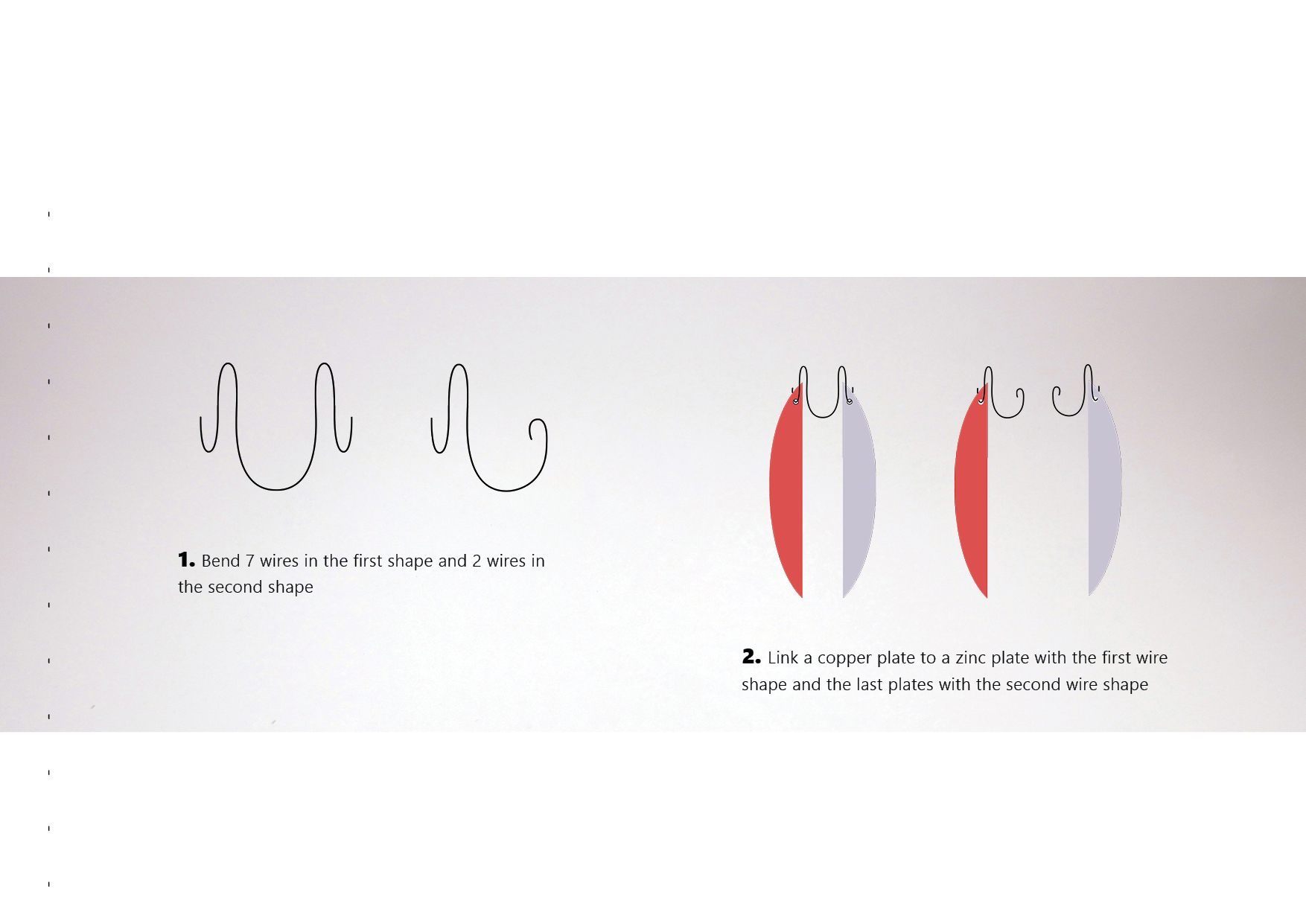DIY Nightlight battery
EXTRACTING ENERGY FROM MATTER
Would you like to experiment like a scientist ? Would you want to build something magic with your own hands ? Would you like to understand how different materials can produce energy ?

Illustration of a Volta battery (1904) Leçons de Physique,
Gillard,
Éditions Vuibert et Nony. Reuse of this file "by kind permission of Éditions Vuibert".
This
curious educational object is a lamp which invites its user to build the energy source
simply from zinc, copper, and white vinegar. In the process, clients are brought
to following the footsteps of those who made the first electric batteries.
The aim of this construction game is to confront the current issues of energy production and consumption, to understand its origins and to measure its preciousness. This lamp is designed for industrial production. It is easy to dismantle and fully recyclable.
The aim of this construction game is to confront the current issues of energy production and consumption, to understand its origins and to measure its preciousness. This lamp is designed for industrial production. It is easy to dismantle and fully recyclable.

Volta column battery, 1800. Musée des arts et métiers, Paris. Musée des arts et métiers, Cnam / Photo Pascal Faligot.
The
glass 'cells' containing the liquid are held between two pieces of cork to
absorb any odors. A zinc blade and a copper blade separated by a third glass blade
are plunged into each vinegar tube. This allows electrons to flows from one
blade to the other until both blades have the same charge, creating an
electrical current. Connected in series, these units generate enough current to
light an LED bulb.
The project was created for the Kikkerland Design Challenge (2019) and with direct interaction with the company. It has been published on the Kikkerland and Core 77 websites. The functional prototype below was exhibited at New York Design Week (2019).
The project was created for the Kikkerland Design Challenge (2019) and with direct interaction with the company. It has been published on the Kikkerland and Core 77 websites. The functional prototype below was exhibited at New York Design Week (2019).



Details of the mounting steps :







